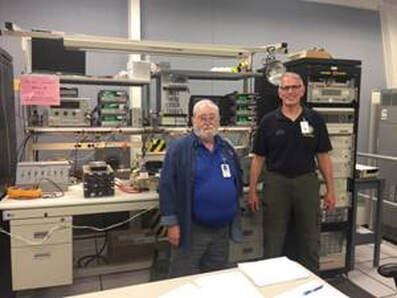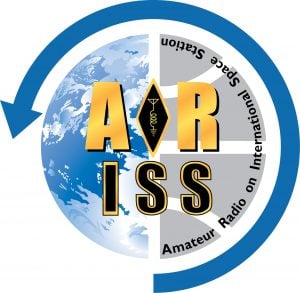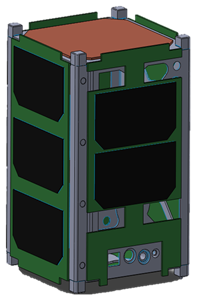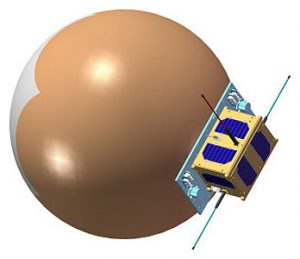AMSAT NEWS SERVICE
ANS-251
The AMSAT News Service bulletins are a free, weekly news and information service of AMSAT North America, The Radio Amateur Satellite Corporation. ANS publishes news related to Amateur Radio in space including reports on the activities of a worldwide group of Amateur Radio operators who share an active interest in designing, building, launching and communicating through analog and digital Amateur Radio satellites.
The news feed on https://amsat.org publishes news of Amateur Radio in space as soon as our volunteers can post it. Please send any amateur satellite news or reports to: ans-editor at amsat dot org. You can sign up for free e-mail delivery of the AMSAT News Service Bulletins via the ANS List; to join this list see: https://www.amsat.org/mailman/listinfo/ans
In this edition:
- AMSAT Board of Directors Election Ballots Due September 15
- 2019 AMSAT Space Symposium Preliminary Schedule Now Available
- 2019 AMSAT Symposium Early-Bird Registration Ends September 15
- DM02 Satellite Expedition Sunday, September 22 – N6O/MM
- VUCC Awards & Endorsements for August 2019
- How to Support AMSAT
- Upcoming Satellite Operations
- Satellite Shorts from All Over
Don’t miss the 50th Anniversary AMSAT Space Symposium
October 18-20 in Arlington, VA.
https://www.amsat.org/amsat-symposium/
AMSAT Board of Directors Election Ballots Due September 15
Votes must be received no later than Sunday, September 15, 2019 in order to be counted in the 2019 AMSAT Board of Directors Election. AMSAT members should have received ballots by mail. Members who have not yet received their ballot must contact ElectionBuddy via email to [email protected]
[ANS thanks AMSAT for the above information.]
2019 AMSAT Space Symposium Preliminary Schedule Now Available
A preliminary schedule of events for the 2019 AMSAT Space Symposium has been posted to the AMSAT website.
It can be accessed at https://www.amsat.org/symposium-schedule/
[ANS thanks the 2019 AMSAT Symposium Team for the above information.]
2019 AMSAT Symposium Early-Bird Registration Ends September 15
An early-bird registration rate for the 37th Annual AMSAT Space Symposium and General Meeting, Friday through Sunday, October 18-20, 2019, in Arlington, Virginia, is available through September 15, 2019 per the following schedule:
| Registration September 16, 2019 – October 11, 2019 | $65 |
| Registration at the Door | $70 |
You can complete your registration on-line via the AMSAT Store:
https://www.amsat.org/product-category/amsat-symposium/
This year, all registrants will receive a digital copy of the Proceedings on a thumb drive. Attendees may purchase a hard copy for $25.00. Non-attendees may put their name on a waiting list for a hard copy, if there are any left over. The digital version of the Proceedings will be made available on the online store shortly after the Symposium concludes.
Student Registration is 50% off and does not include the Proceedings.
[ANS thanks the 2019 AMSAT Symposium Team for the above information]
Symposium Papers Due September 23rd!
Final copies of papers must be submitted by September 23rd
for inclusion in the printed proceedings. Abstracts and papers
should be sent to Dan Schultz at n8fgv(at)amsat.org
DM02 Satellite Expedition Sunday, September 22 – N6O/MM
Alex, N7AGF, and Ron, AD0DX, are planning to activate DM02 on Sunday, September 22, 2019 on FM and Linear satellites.
It’s a 5 or 6 hour boat trip to anchor off San Clemente Island. We will be on the water for 22 hours and operating around 10 hours beginning around 3:00 AM PDT (1000Z) on Sunday, September 22.
The cost of the boat is $2500 and we would appreciate contributions to help offset this cost. In the 24 hours after posting to Twitter we have received around $1300 which Alex and I are very thankful for. The island has Verizon and AT&T and Alex has a Garmin InReach so we should be able to tweet passes. The plan is to make as many passes as possible once we start operating around 3:00 AM PDT. We may skip some of the low western passes.
We will be using N6O/mm and we have a qrz.com page with all the details: https://www.qrz.com/db/N6O
If you need the grid please give us a call!
Of course this is dependent on the weather, but the captain says it has been a good September so far. If you are able to contribute financially we really appreciate the help to offset some of our costs. Details to contribute are on the N6O QRZ.com webpage.
[ANS thanks Ron, AD0DX, and Alex, N7AGF, for the above information.]
2019 marks AMSAT’s 50th Anniversary of Keeping Amateur Radio in Space.
To help celebrate, we are sponsoring the AMSAT 50th Anniversary Awards Program.
Full details are available at
https://www.amsat.org/amsat-50th-anniversary-awards-program/
VUCC Awards & Endorsements for August 2019
Here are the endorsements and new VUCC Satellite Awards issued by the ARRL for the period August 1, 2019 through September 1, 2019. Congratulations to all those who made the list this month!
| Callsign | VUCC 01 Aug | VUCC 01 Sept |
| K8YSE | 1884 | 1926 |
| KO4MA | 1673 | 1694 |
| WA4NVM | 1536 | 1544 |
| N8RO | 1068 | 1070 |
| K8TL | 982 | 1012 |
| N6UK | 626 | 675 |
| N9IP | 625 | 635 |
| KE4AL | 556 | 602 |
| NS3L | 505 | 526 |
| W7QL | 401 | 451 |
| K9UO | 425 | 450 |
| PV8DX | 360 | 373 |
| AC9E | 300 | 352 |
| AD0HJ | 282 | 300 |
| PS8ET | 275 | 274? |
| N7EGY | 200 | 250 |
| W0NBC | 106 | 137 |
| KC9UQR | 113 | 132 |
| AI9IN | 100 | 125 |
| N7AME | 100 | 125 |
| N4QX | 100 | 106 |
| AA0MZ | New | 102 |
| KI0G | New | 102 |
| DL4ZAB | New | 101 |
| KD8RTT | New | 101 |
| WD9EWK-DM54 | New | 101 |
| W7BMD | New | 100 |
If you find errors or omissions. please contact me off-list at <mycall>@<mycall>.com and I’ll revise the announcement. This list was developed by comparing the ARRL .pdf listings for the two months. It’s a visual comparison so omissions are possible. Apologies if your call was not mentioned. Thanks to all those who are roving to grids that are rarely on the birds. They are doing most of the work!
[ANS thanks Ron Parsons, W5RKN, for the above information.]
Purchase AMSAT Gear on our Zazzle storefront.
25% of the purchase price of each product goes towards
Keeping Amateur Radio in Space
https://www.zazzle.com/amsat_gear
How to Support AMSAT
AMSAT relies on the support of our members and the amateur radio community to Keep Amateur Radio in Space. How can you help?
- Join AMSAT
Both you and AMSAT will benefit when you join. You get the AMSAT Journal bimonthly and support from AMSAT Ambassadors. Member dues and donations provide AMSAT’s primary support. Join today at https://www.amsat.org/product-category/amsat-membership/
- Become a Life Member
Becoming a Life Member has never been easier. Now you can become a Life Member with 12 monthly payments of $74 through our online store. See https://www.amsat.org/product/lifetime-membership/ for details.
- Donate to AMSAT
Make a one time or recurring donation to AMSAT today. Even as little as one dollar a month can make a difference! Donate today at https://www.amsat.org/donate/
- Purchase AMSAT gear on our Zazzle storefront.
AMSAT receives 25% of the price of each sale on AMSAT logo merchandise from our Zazzle storefront located at https://www.zazzle.com/amsat_gear
- Support AMSAT when you make purchases from Amazon!
So far, AMSAT has received $3,913.29 from AmazonSmile. Search for “Radio Amateur Satellite Corporation” https://smile.amazon.com/ref=smi_ext_twt_dshb_smi
- Volunteer for AMSAT
AMSAT relies on volunteers for nearly all of our activities. If you have an idea for how to help, please let us know, Details on
volunteering can be found at https://www.amsat.org/volunteer-for-amsat/
[ANS thanks the AMSAT office for the above information.]
AMSAT and ARISS are currently supporting a FundRazr campaign to raise
$150,000 for critical radio infrastructure upgrades on ISS. The upgrades are
necessary to enable students to continue to talk to astronauts in space via
Amateur Radio. We have reached a great milestone with $33,250 raised or about
17% towards our goal. This would not have been possible without your
outstanding generosity!!
For more information and to DONATE TODAY visit:
https://fundrazr.com/arissnextgen?ref=ab_e7Htwa_ab_47IcJ9
Upcoming Satellite Operations
- Help Celebrate AMSAT’s 50th Anniversary with these “W3ZM on the Road” Operations:
https://www.amsat.org/events/was-w3zm/
- N7MJ Roving 11 State Tour – WY, NE, IA, IL, KY, TN, AR, OK, TX, NM, AZ, August 25th – September 9th, 2019.
Jack N7MJ is heading out (in his Vette) on a 2 weeks road trip from Cheyenne, WY to the big 25th Anniversary Celebration of the National Corvette Museum in Bowling Green, KY, (August 28-31). Then he will head through TN to AR (EM34) for a family gathering 9/3-4, the another family gathering 9/4-5 in Atoka, OK EM14/24). With the partying over, down through TX and NM and end up in Chandler, AZ. FM only.
- AM1SAT (All Grids in Spain) September 9-15, 2019
AMSAT-EA will be transmitting its special call AM1SAT via all active satellites from September 9th to September 15th as part of the V RadioHam Fair IberRadio 2019 activities. IberRadio is the biggest event for the ham community in SouthWest Europe and will open doors September 14th and 15th . Learn more about IberRadio at http://www.iberradio.es. The AM1SAT call sign will be active from a minimum of 14 different grids during that time to help satellite operators to collect as much EA locators as possible. As part of this activity and in order to promote the participation, AMSAT-EA is sponsoring the AM1SAT Special Award in two categories, Silver and Gold. More info available at https://www.amsat-ea.org/ and as a pdf at https://tinyurl.com/ANS-237-AM1SAT-Award.
- DN11/DN12 + DN03 – September 17, 2019
Casey, KI7UNJ, is heading to the DN11/DN12 line, September 17th. Look for him on SO-50, AO-92, and AO-91, between 1657z and 1812z. On the way back, Casey will make a quick stop in DN03 to catch the 2043z PO-101 pass. Watch Casey’s Twitter feed for further updates https://twitter.com/KI7UNJ
- DM02 – September 22, 2019 Ron, AD0DX, and Alex, N7AGF,
are chartering a boat to the ultra-rare DM02 grid square. They will use the special event call sign November 6 Ocean/Maritime Mobile. Expected window of operation is from 1000z to 1900z, Sunday, September 22nd. More information is available on QRZ https://www.qrz.com/db/N6O to include how you can help support this monumental operation. Ron and Alex are expected to have cellular service out there, so keep an eye on their Twitter feeds https://twitter.com/ad0dx and https://twitter.com/N7AGF
[ANS thanks Robert Bankston, KE4AL, for the above information.]
AMSAT, along with our ARISS partners, is developing an amateur radio package,
including two-way communication capability, to be carried on-board
Gateway in lunar orbit. Support AMSAT’s projects today at
https://www.amsat.org/donate/
Satellite Shorts from All Over
- AMSAT Argentina reports that the digipeater on BugSat-1 / Tita is active at 9K6 AFSK, call=LU7AA, also a ?DX? command should give stations heard. Passes & Frequencies at http://amsat.org.ar/pass?satx=tita Pwr is 2W. (Via LU7AA, AMSAT Argentina)
- A Japanese cargo spacecraft loaded with more than four tons of supplies,spare parts and experiment hardware is scheduled to launch from the Tanegashima Space Center in southern Japan to the International Space Station at 5:33 p.m. EDT Tuesday, Sept. 10 (6:33 a.m. Sept. 11 in Japan). Live coverage of the launch and capture will air on NASA Television and the agency’s website. (Via NASA, https://tinyurl.com/ANS-251-NASA)
- Having trouble uploading satellite QSOs to ARRL’s Logboook of the World? See AMSAT’s guide at https://tinyurl.com/ANS-251-LoTW
- Looking for information about satellite frequencies or operating status? The AMSAT website has you covered! https://www.amsat.org/two-way-satellites/
- It’s going to be an exciting fall for Amateur Radio in Space! The 50th Anniversary Space Symposium will take place in October and the launches of both RadFxSat-2 / Fox-1E and HuskySat-1 carrying an AMSAT V/u transponder are expected to occur.
In addition to regular membership, AMSAT offers membership in the President’s Club. Members of the President’s Club, as sustaining donors to AMSAT Project Funds, will be eligible to receive additional benefits. Application forms are available from the AMSAT office.
Primary and secondary school students are eligible for membership at one-half the standard yearly rate. Post-secondary school students enrolled in at least half time status shall be eligible for the student rate for a maximum of six post-secondary years in this status. Contact Martha at the AMSAT office for additional student membership information.
73,
This week’s ANS Editor,
Paul Stoetzer, N8HM
n8hm at amsat dot org





 CAS-7B (BP-1B) was developed by the Chinese Amateur Satellite Group (CAMSAT), and in cooperation with the Beijing Institute of Technology (BIT). CAMSAT completed the project planning, design, build, and testing, and manages the on-orbit operation of the satellite. BIT provided the satellite environmental testing, launch support, and financial support. Many students from BIT were involved with the project, learning about satellite technology and amateur radio. The satellite carries a CW telemetry beacon and FM repeater that has been active since launch.
CAS-7B (BP-1B) was developed by the Chinese Amateur Satellite Group (CAMSAT), and in cooperation with the Beijing Institute of Technology (BIT). CAMSAT completed the project planning, design, build, and testing, and manages the on-orbit operation of the satellite. BIT provided the satellite environmental testing, launch support, and financial support. Many students from BIT were involved with the project, learning about satellite technology and amateur radio. The satellite carries a CW telemetry beacon and FM repeater that has been active since launch.